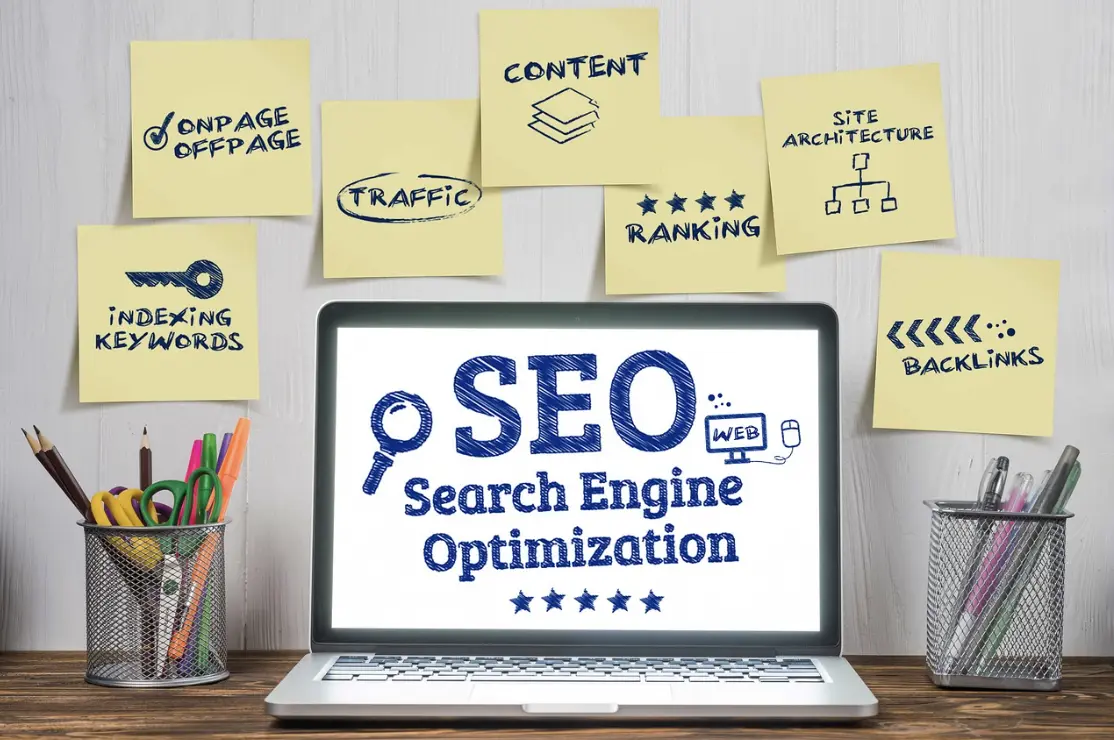You’ve built a brand-new SaaS product. It may be some new-age CRM system or productivity suite that turns list-tasks into concertos. You’ve used it, debugged it, and deployed it. Now you’re staring into an empty analytics dashboard, anticipating traffic any time.
Here’s the spoiler: That traffic won’t come unless you invest in SEO.
The good news? SaaS startup SEO is not black magic. It’s strategy, it’s consistency, and it’s learning how to say, ‘Hey Google, look this way!’ in a tone that search engines take notice of. If you’re bootstrapped or VC-backed, SEO can make you as competitive as the market giants. And no, you don’t need to be an algorithm guru to get started. But you do need a good game plan. So let’s take a look at how you can create that plan.
Partnering up: Why your SEO ally matters
If you’ve ever had your toes in the water with SEO before, you know it’s a marathon, not a sprint. It’s also a lot better with the right running buddy. If you’re new to SEO or if you’re looking to scale what’s working for your business already, you’ll need an SEO arm that can build a strategy that gets you qualified leads so you can get signups and close sales. Think you need a personal trainer for your marketing funnel? Think again!
Some of the best US SEO agencies have broken into the SaaS niche. Take Skale, for example. They don’t dabble in SEO as a secondary thing–they inhale SaaS growth. This is the agency that understands that a B2B SaaS brand doesn’t need traffic, it needs converting traffic. They will examine what you do now, research keywords that fall into your buyer’s process, and they will create content that beats your coffee bill during launch week.
Doing business with an experienced agency like Skale gets you connected with data-driven roadmaps for growth, smoothly running content machines, and–a reality check–a whole lot more time spent on your product and the SERPs handled by the experts.
Start with your audience, not your algorithm
Let’s dispel one myth before we go any further: SEO is not about gaming Google. It’s about knowing your user better than anybody else, and responding before they finish typing what they search. It means being crystal clear about who your users are, what they search for, and how you can help them. Here goes knowing which kind of content your users like the best. Maybe they’re more comfortable with blog posts, or Instagram photos. But mostly they like videos, so if you’re set on creating a short one, don’t forget to use Happy Scribe’s video translation option. The goal is to boost your SEO, and translation, together with subtitles can help a lot in this field. You can even translate your content in more than 120 languages, thus expanding your audience all around the world.
Don’t go after a keyword like ‘time tracking software.’ That space belongs to enterprise giants. Compete in long-tail terms like ‘how do you track time for freelance teams’ or ‘free time tracking app with invoicing.’ Those low-competition terms are as close as you can come to liquid gold; that is, they’re less populated, very specific, and most likely to drive converters.
Make use of tools like Ahrefs, SEMrush, or the free versions like Google’s Keyword Planner, and dig into what your target market is looking for. But do so beyond the keyword. Engage in the subreddits, Slack communities, Discord groups, wherever your perfect customer hangs out. Once you talk their talk, the reliability increases for your content. And yes, meme referents too if your group has so.
Create less fluff, more value content
It’s a double-slash-edged sword when it comes to SaaS content marketing. Blogs and guides are very effective ways of climbing the ranks. But the internet has enough ‘10 Productivity Tips You Already Know’ pieces all over it. So, how do you make it distinct?
You provide actual value. You solve a problem. You teach someone something. Be informative and human in the process. Instead of boring listicles, consider creating in-depth tutorials about operating your tool in non-standard use cases. Or share behind-the-scenes strategies that were successful when achieving that first 100 users.
Don’t sleep on fresh content either. Updating your blog content with current information, current trends, or current examples makes Google believe you factor in relevance. It makes your readers believe you’re not some 2019 ghost site still trying to rank using old-timey recommendations.
It’s also where SEO and UX overlap. Google doesn’t want your content to appear. They want users to like having it there. So your blog posts need to be scannable, attractive, mobile-friendly, and fast-loading. Because nobody’s reading a wall of text on their phone in line for coffee.
Organize your website like a caring librarian
It’s a matter of keeping things very simple and structured. You don’t want people (or search engine spiders) bumbling through some web maze of inner pages and culs-de-sac. Your site needs its best gateway in the guise of the homepage, which opens into key landing pages individually optimized for specific services, features, or industries.
Blog silos and category pages also make it possible for you to organize your content in topic clusters that search engines love. It’s almost as if you make your mini-Wikipedia about your SaaS niche. You have your core topic – e.g., ‘customer support automation’ – and you have all your complementary articles underneath it, which go into depth about tools, use cases, integrations, and strategies.
Optimize each page with unique meta descriptions, headers, internal links, and schema markup as appropriate. That’s not SEO jargon, but the difference between showing up on page one or languishing underneath some ‘People also ask’ box all the time.
And talking about URLs, keep them clean, descriptive, and readable. If your SaaS product can address numerous problems, it can fix, create separate landing pages for each industry or use case. Segmenting in this manner helps you shoot towards very specific terms and gets you better conversions.
Link building is still indispensable
You did see this coming. Backlinks are also one of the biggest ranking factors in SEO. If you can get other reliable sites linking back to yours, Google thinks, ‘Hey, this site’s legit.’ But in 2025, nobody’s handing out links like free samples at Costco.
Guest posting in industry publications remains worth doing, only if your work has value, is supported by facts and figures, and is genuinely informative. Do your digital PR: present journalists with news pitches that deal with real-world challenges your SaaS is addressing.
Create original research, surveys, or interactive content that will be worth mentioning elsewhere. Build relationships with influencers in your niche. They can mention your content and link back organically.
Internal linking doesn’t do any harm either. Direct users towards relevant blog posts or product pages from your own blog. It keeps people engaging with your site longer and redistributes authority across your domain. Just don’t do it too frequently because no one wants a blog post that’s 60% links.
And don’t forget, link building takes time. Prioritize quality over numbers. One link in a reputable industry publication has value over twenty in weak blogs, which were last updated when Vine still existed.
Track it all. Adjust often. Celebrate small victories
Analytics is not the sole privilege of business marketing departments with dashboards that resemble the control rooms at NASA. Even a new-age SaaS startup can (and must) be obsessed with data. Make use of Google Analytics and Google Search Console and keep track of how users are discovering your site, what pages they’re lingering on, and where they’re bouncing like a ball made of rubber.
You’d rather track impressions, click-throughs, rankings, and conversions, more so than traffic volume. 10 conversions through visits are better than 10,000 non-converting visits. If you notice one blog post soaring through the ranks, redouble your efforts. Rewrite it. Add a CTA. Suggest a complementary product demo. If another post has burned and crashed, know why. Old news? Superficial? Someone else stole you with a better guide?
SaaS SEO can’t be a set-it-and-forget-it solution. It’s gardening a highly persnickety houseplant. It wants light now. Less water. It’s all about checking in, seeing what’s thriving, and tweaking accordingly.
There are also tools like Hotjar and Crazy Egg that can reveal how users engage with your content. Features like heatmaps, scroll tracking, and user recordings are buzzwords but offer fundamental insights: where your users are looking, where they are confused, and where they are dropping off. Use that information and make changes in your UX and tweak your SEO signals.
The link between SEO and product marketing
You will sooner or later discover that your best SEO content remains your best product content. That most-clicked blog post? It’s probably the blog post describing exactly how your tool relieves some specific pain point.
That Google number-one guide? It most probably has a step-by-step tutorial using your platform. This is where SaaS SEO can be used as a marketing multiplier.
Instead of creating content in information silos, create content materials that align with your sales process. Align your SEO efforts with your product marketing campaigns. Begin by releasing a new feature and creating a blog post, help doc, and landing page, all with the same keyword strategy behind them. Collaborate with your sales and support teams.
What do users ask in the demo? What do they communicate about in support tickets? Those are gold nuggets for you when writing about things related to SEO. If customers are asking, prospects are probably Googling the very same things.
When your product and SEO messaging work together, magic happens. Now, your content is accomplishing more than helping you rank; it’s driving product engagement and reducing churn.
Petra Rapaić is a B2B SaaS Content Writer. Her work appeared in the likes of Cm-alliance.com, Fundz.net, and Gfxmaker.com. On her free days she likes to write and read fantasy.





